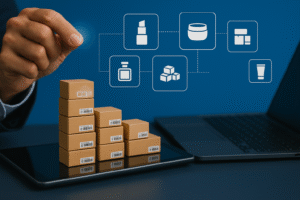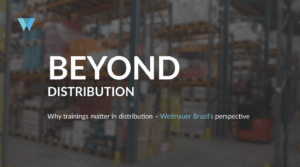Even the best products need an effective strategy to reach the customers. Success in the market isn’t just about what you offer—it’s about how you get it into your customers’ hands. That’s where a Route to Market (RTM) strategy comes in.
Simply put, an RTM strategy is the plan that connects your products to your buyers. It covers everything from choosing the right sales and distribution channels, to managing logistics, and designing customer touchpoints that drive engagement. Done right, it fuels business growth, improves operational efficiency, and ensures your customers get a seamless experience.
Whether you’re launching in a new region or refining your current model, a solid RTM approach can make all the difference. At Weitnauer, we specialize in helping brands—especially premium and international ones—build smart, adaptable route-to-market strategies that deliver results.
Why a Strong RTM Strategy Matters
A strong Route to Market (RTM) strategy does more than move products. Companies that align their distribution, sales, and customer access strategies with market demands see clear benefits: higher revenues, lower costs, and stronger customer relationships. According to McKinsey, businesses with well-structured commercial strategies can achieve up to 15% more revenue growth and reduce go-to-market costs by as much as 30%.
RTM strategies are especially impactful in multichannel or fragmented markets. Forrester notes that businesses leveraging diverse sales and distribution channels see better market coverage and improved customer retention—key advantages in competitive sectors like FMCG, B2B, and premium goods.
Take two comparable consumer brands entering Central Europe. One uses a direct-to-retail model, handling everything in-house. The other partners with established regional distributors and adapts its logistics model to local market conditions. The second brand, with a tailored RTM approach, achieves shelf presence in half the time, cuts operational complexity, and improves pricing flexibility—resulting in 20% faster time-to-market and stronger early sales performance.
The gap between a reactive sales model and a strategic RTM plan is real—and often decisive. At Weitnauer, we’ve helped brands close that gap with market-specific, flexible RTM models that deliver results across regions and categories.
Types of Route to Market Models
When crafting a Route to Market (RTM) strategy, a lot of it depends on the distribution model. It is crucial to ensuring that products reach customers effectively and efficiently. Two key models are travel retail and local distribution, each with its unique set of advantages and challenges.
Travel Retail
Travel retail targets international travelers in high-traffic locations such as airports, duty-free shops, and cruise terminals. This model is particularly effective for premium brands looking to engage with a global audience in a controlled environment. Travel retail as a route-to-market offers the unique advantage of reaching a diverse customer base with purchasing power, especially for luxury goods, fragrances, and spirits. It’s an excellent way to build brand visibility and achieve instant international exposure.
At Weitnauer, this model is fully operated from the company’s headquarters in Basel, Switzerland, allowing for centralized management and streamlined logistics. The company’s established expertise in navigating global travel retail channels ensures efficient product flow and consistent customer engagement across regions.
Domestic Distribution
Domestic distribution focuses on regional or national markets, where brands work closely with distributors, retailers, and agents to ensure products reach consumers through physical stores, online platforms, and direct sales. As a route-to-market, this model allows for more tailored strategies based on local consumer preferences, pricing, and logistics capabilities.
Weitnauer’s approach to local distribution includes dedicated teams, local warehouses, and an expansive distribution network spread across 21 offices and 27 warehouses globally. This extensive infrastructure ensures that brands can reach customers quickly and efficiently, while also providing the flexibility to adapt to regional market demands.
Leveraging both travel retail and local distribution is what makes Weitnauer unique. Working with Weitnauer Group provides brands with a comprehensive expertise in RTM that maximizes reach and customer satisfaction across diverse global markets.
Key Considerations When Crafting Your RTM Strategy
Building an effective Route to Market (RTM) strategy means making deliberate choices—each tailored to your product, your customer, and your market environment. Here’s how we make these decisions at Weitnauer:
Understand Your Product
Your product defines much of your RTM path. Is it a physical good, a complex system, or a service? Does it need installation, demonstration, or after-sales support? For example, premium electronics often require direct-to-consumer or controlled retail environments to ensure proper handling and brand experience. On the other hand, fast-moving consumer goods (FMCG) benefit from broad retail or distributor-based channels for speed and volume.
Know Your Customer
Who’s buying your product—and how do they want to engage? A successful RTM strategy is built around customer behavior. Are they digital-first, or do they prefer in-store experiences? Are they price-sensitive or experience-driven? Gathering this insight can involve data from CRM systems, focus groups, online surveys, or loyalty programs. We use these insights to design touchpoints that resonate, whether that means offering online subscriptions or building strong in-store brand presence.
Analyze the Market and Region
RTM strategies must adapt to local realities. Is the infrastructure developed enough for direct logistics? Are there regulatory barriers? What’s the stability of the supply chain? For instance, in some emerging markets, limited cold-chain logistics may rule out certain products altogether. In contrast, regions with well-established retail networks may allow quicker plug-and-play channel access. At Weitnauer, we’ve seen how overlooking these factors can lead to missed opportunities or unnecessary costs.
Flexibility and Continuous Optimization
A Route to Market (RTM) strategy isn’t a static playbook—it’s a living framework that evolves with the market. Customer behavior shifts, supply chains get disrupted, and new sales channels emerge. To stay competitive, brands must continuously track performance and adapt.
Key performance indicators (KPIs) like sell-through rates, channel profitability, lead times, and customer satisfaction help identify what’s working—and what’s not. When disruptions hit, agility matters. During the 2021 global shipping delays, for example, several FMCG companies quickly shifted from international wholesalers to regional distributors. This pivot allowed them to maintain delivery timelines and preserve shelf space in high-demand markets, while competitors lost ground due to slower response times.
At Weitnauer, we view RTM strategy as an ongoing process—not a one-time decision. Regular channel reviews, pilot programs in new regions, and feedback loops with local partners are part of how we help brands fine-tune their market presence. Flexibility isn’t a backup plan—it’s a core part of sustainable growth.
Final Thoughts & Takeaways
A well-executed Route to Market strategy isn’t just a nice-to-have—it’s essential for long-term growth, efficiency, and brand resilience. As markets shift and customer expectations evolve, having the right RTM framework can mean the difference between stagnation and sustained success.
Whether you’re entering a new region, expanding product lines, or rethinking your distribution model, now is the time to assess your current approach. Is it delivering the reach, flexibility, and performance your business needs?
At Weitnauer, we specialize in designing RTM strategies that are rooted in real-world insight and built to scale. If you’re ready to unlock new market opportunities or optimize your existing setup, we’re here to help.
Connect with us to explore how our tailored RTM solutions can power your next stage of growth.


